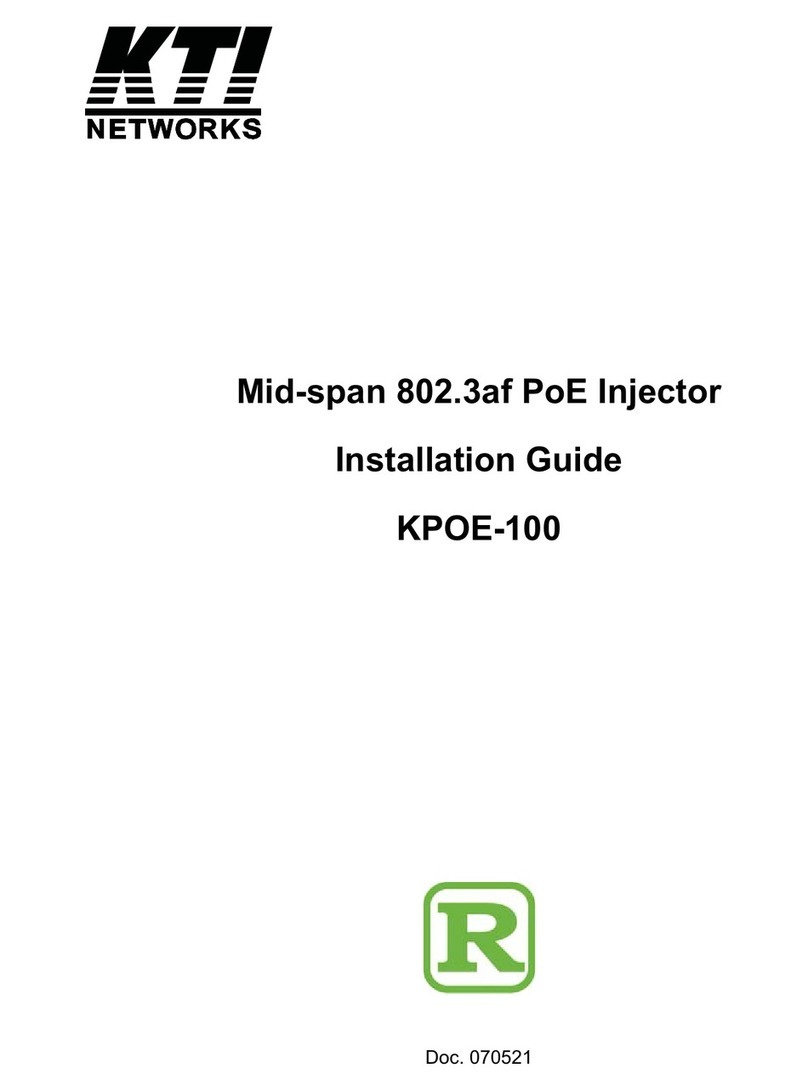
-5-
1. Introduction
Power over Ethernet provides a way for Ethernet network devices to be powered by UTP cables, including
Cat.5, 5e, and 6 rather than by separate power cords. The device is a mid-span injector that can deliver output
power supporting proprietary PoE++ 90W Type 4 PDs, 802.3at Type 2 high-power PDs, and 802.3af Type 1
PDs. The injector supports both Fast Ethernet connection and Gigabit Ethernet connection.
For no damage to the connected device, it is enhanced with smart design to discover compliant PD. It shuts
down the power immediately when incompliance is discovered. For safety, other protections for conditions
such as disconnection, overload, over-current, and short circuit are also provided to secure your network
installation. It is an ideal mid-span that supplies reliable, uninterrupted power up to 90W to IP phones, 802.11
access points, pan-tilt-zoom cameras, and other Ethernet devices using existing LAN cable infrastructure.
1.1 Features
Supports both Fast Ethernet and Gigabit Ethernet
Backward compatible with 802.3af and 802.3at-compliant PDs
Delivers power output to support 90W PD
Type 1 ~ Type 4 compliant PD discovery & classification
Power shutdown protection for incompliant PD
Power shutdown protection for disconnection
Power shutdown protection for overload, over-current, and short circuit
Multiple built-in power connectors to support a variety of external power supply
Plug and play with no configuration required
Supports DIN-rail and panel mounting




























